ES BALUARD HOSTS ANA LAURA ALÁEZ'S DIALOGUE WITH EMPTINESS
Soy Palacio / Soy Establo is the proposal conceived by Ana Laura Aláez (Bilbao, Spain, 1964) for one of the spaces of the Balearic Museum Es Baluard and in which she proposes, as an intervention, an express dialogue with emptiness. Born as an ad-hoc project, its main instrument to achieve this narrative is a sculptural work of reticular order, which is aimed at infinity and in which several thematic edges are raised, reaching a certain debate between counter positions and the elements that have been incorporated to the artist since she moved to Mallorca.
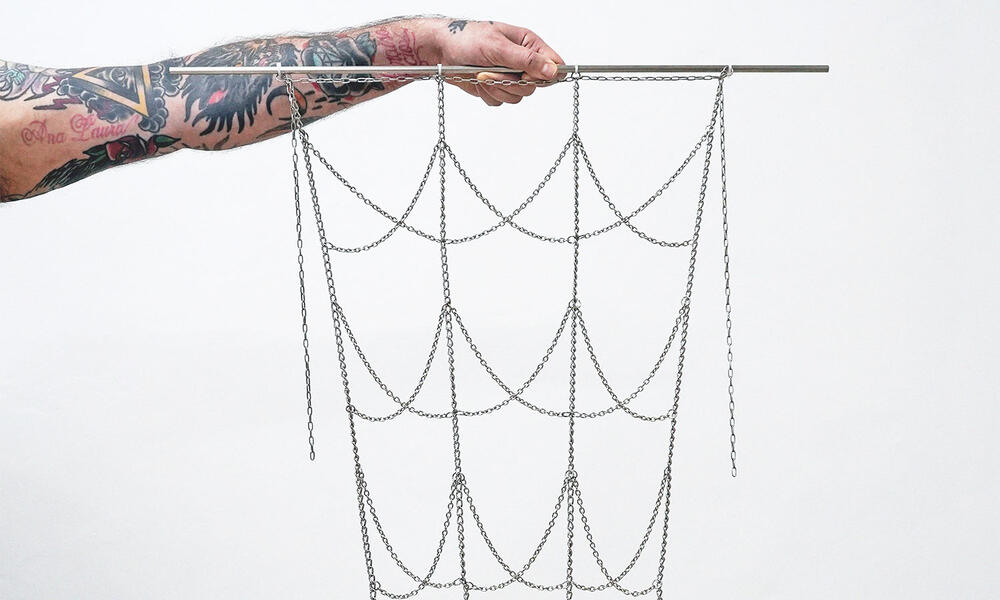
However, more than capturing certain evidences of her artistic proposal and drift, this exhibition insists on the appreciation of the interior and part of its complexity results from showing that inner part through that network woven between the planes and geometric axes of space and that become an area to which one is invited until one disappears in it.
-
Ana Laura Aláez_Soy Palacio-Soy Establo_(Concepto)_I (Foto de David Bonet)
-
Ana Laura Aláez_Soy Palacio-Soy Establo_(Concepto)_I (Foto de David Bonet)
-
Ana Laura Aláez_Soy Palacio-Soy Establo_II (Foto de David Bonet)
-
Ana Laura Aláez_Soy Palacio-Soy Establo_III (Foto de David Bonet)
-
Ana Laura Aláez_Soy Palacio-Soy Establo_IV (Foto de David Bonet)
Soy Palacio / Soy Establo, by Ana Laura Aláez, can be seen until September 1 at Es Baluard, Plaza Porta de Santa Catalina 10, Palma de Mallorca, Spain.
May interest you
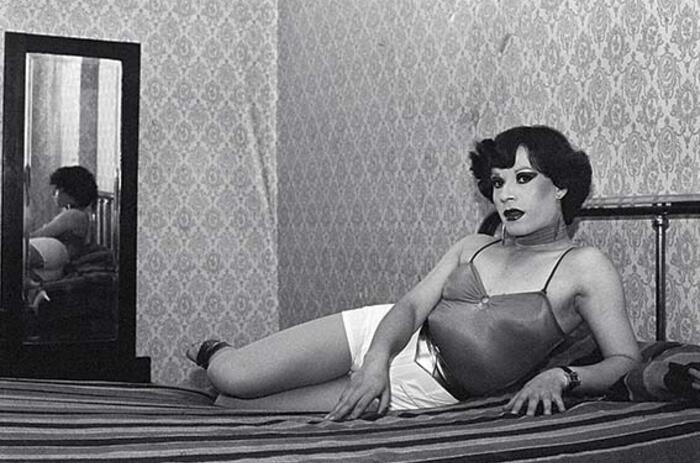
The international photography festival PHOTOEspaña proposes a program of exhibitions that evoke, both in concept and subject matter, a breadth and diversity that have led to its recognition for years. However, one of its most appreciated improvements has been the expansion of venues and cities, which allows for a wider and better offer.
PAZ ERRÁZURIZ IN THE FUNDACIÓN MAPFRE COLLECTIONS
The international photography festival PHOTOEspaña proposes a program of exhibitions that evoke, both in concept and subject matter, a breadth and diversity that have led to its recognition for years. However, one of its most appreciated improvements has been the expansion of venues and cities, which allows for a wider and better offer.

The international photography festival PHOTOEspaña proposes a program of exhibitions that evoke, both in concept and subject matter, a breadth and diversity that have led to its recognition for years. However, one of its most appreciated improvements has been the expansion of venues and cities, which allows for a wider and better offer.
PAZ ERRÁZURIZ IN THE FUNDACIÓN MAPFRE COLLECTIONS
The international photography festival PHOTOEspaña proposes a program of exhibitions that evoke, both in concept and subject matter, a breadth and diversity that have led to its recognition for years. However, one of its most appreciated improvements has been the expansion of venues and cities, which allows for a wider and better offer.
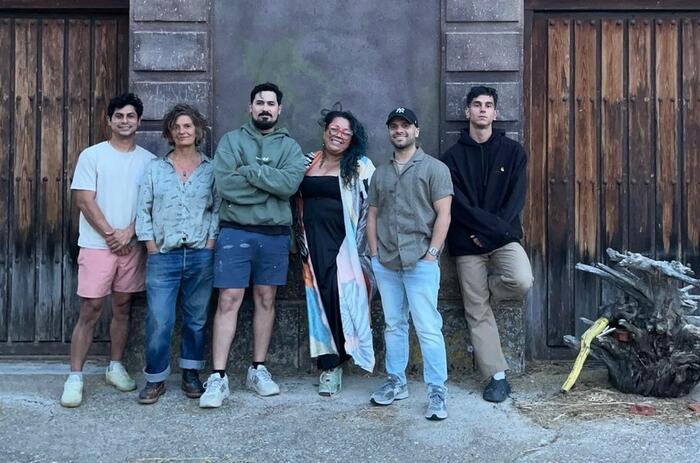
The Museum of Photography of the Antonio Perez Foundation, at its headquarters in the town of Huete, Cuenca, exhibits part of the results of the artistic residence held at Kárstica Espacio de Creación, in which, during last June, a total of six artists have developed their projects.
LATIONAMERICAN ART IN KÁRSTICA'24
The Museum of Photography of the Antonio Perez Foundation, at its headquarters in the town of Huete, Cuenca, exhibits part of the results of the artistic residence held at Kárstica Espacio de Creación, in which, during last June, a total of six artists have developed their projects.
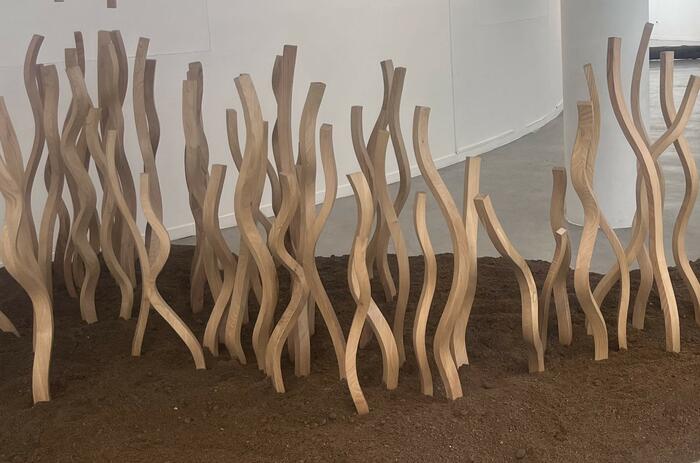
The Museo Extremeño e Iberoamericano de Arte Contemporáneo (MEIAC) is extending until mid-September the exhibition Las líneas de la vida, by artist Pablo Reinoso (Buenos Aires, Argentina, 1955), which deals with the concept of legacy.
REINOSO'S BIOMORPHISM, AT THE MEIAC
The Museo Extremeño e Iberoamericano de Arte Contemporáneo (MEIAC) is extending until mid-September the exhibition Las líneas de la vida, by artist Pablo Reinoso (Buenos Aires, Argentina, 1955), which deals with the concept of legacy.
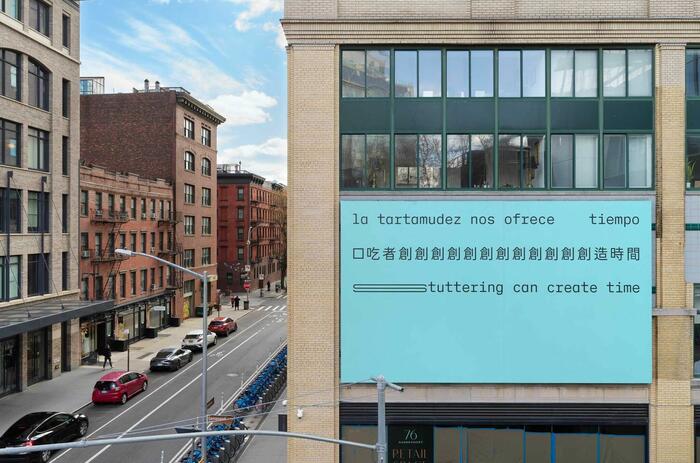
The eighty-first edition of the Whitney Biennial—the longest-running survey of contemporary art in the United States—features seventy-one artists and collectives grappling with many of today’s most pressing issues.
WHITNEY BIENNIAL 2024: EVEN BETTER THAN THE REAL THING
The eighty-first edition of the Whitney Biennial—the longest-running survey of contemporary art in the United States—features seventy-one artists and collectives grappling with many of today’s most pressing issues.
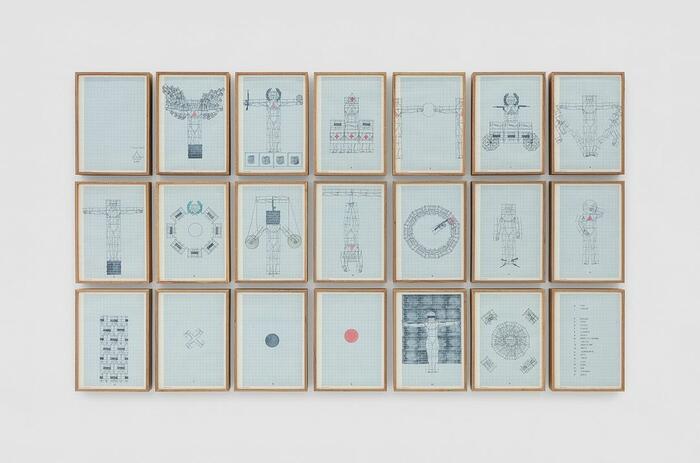
Zielinsky opened a new space in São Paulo, Brazil and presented a solo exhibition by Brazilian artist Claudio Goulart (1954-2000), whose work was developed in Amsterdam, the Netherlands, where he lived for over 30 years until he passed away due to complications from AIDS.
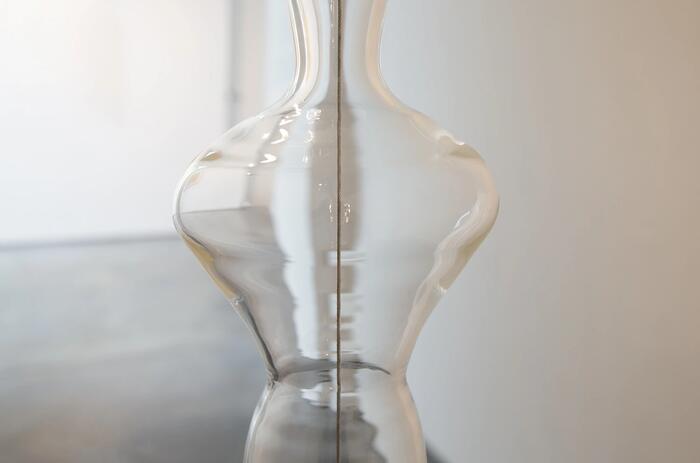
The Madrid-based Max Estrella exhibits in its Project Room space Escuchando la Lluvia (Listening to the Rain), by artist Glenda León (Havana, Cuba, 1976), which also serves as a letter of introduction of the Cuban artist as the gallery's new representative. This piece of enormous stylization is presented as a blown glass sculpture handcrafted by the Royal Glass Factory of La Granja in Segovia that collects a visual representation of a drop of water falling.
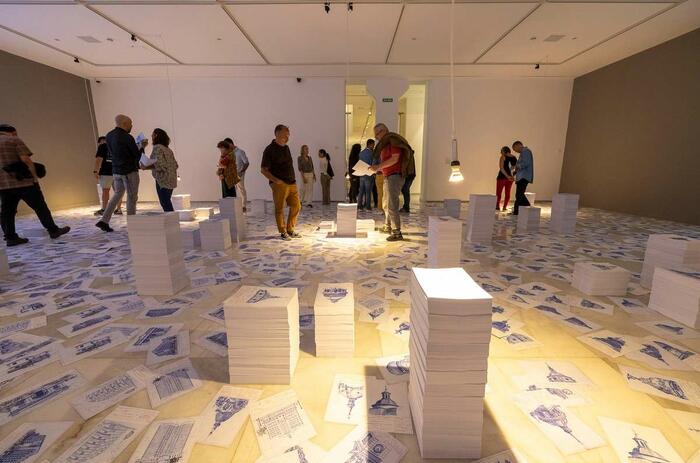
The Centro Atlántico de Arte Moderno (CAAM), located in Las Palmas de Gran Canaria, is hosting the exhibition Toda utopía pasa por la barriga, a tour through the work of Carlos Garaicoa (Havana, Cuba, 1967) curated by Lillebit Fabraga that best connects with architecture, the natural order and the location of the human being in the system.
CARLOS GARAICOA: ARCHITECTURE AND PLACE AT THE CAAM
The Centro Atlántico de Arte Moderno (CAAM), located in Las Palmas de Gran Canaria, is hosting the exhibition Toda utopía pasa por la barriga, a tour through the work of Carlos Garaicoa (Havana, Cuba, 1967) curated by Lillebit Fabraga that best connects with architecture, the natural order and the location of the human being in the system.

The international photography festival PHOTOEspaña proposes a program of exhibitions that evoke, both in concept and subject matter, a breadth and diversity that have led to its recognition for years. However, one of its most appreciated improvements has been the expansion of venues and cities, which allows for a wider and better offer.
PAZ ERRÁZURIZ IN THE FUNDACIÓN MAPFRE COLLECTIONS
The international photography festival PHOTOEspaña proposes a program of exhibitions that evoke, both in concept and subject matter, a breadth and diversity that have led to its recognition for years. However, one of its most appreciated improvements has been the expansion of venues and cities, which allows for a wider and better offer.

The Museum of Photography of the Antonio Perez Foundation, at its headquarters in the town of Huete, Cuenca, exhibits part of the results of the artistic residence held at Kárstica Espacio de Creación, in which, during last June, a total of six artists have developed their projects.
LATIONAMERICAN ART IN KÁRSTICA'24
The Museum of Photography of the Antonio Perez Foundation, at its headquarters in the town of Huete, Cuenca, exhibits part of the results of the artistic residence held at Kárstica Espacio de Creación, in which, during last June, a total of six artists have developed their projects.

The Museo Extremeño e Iberoamericano de Arte Contemporáneo (MEIAC) is extending until mid-September the exhibition Las líneas de la vida, by artist Pablo Reinoso (Buenos Aires, Argentina, 1955), which deals with the concept of legacy.
REINOSO'S BIOMORPHISM, AT THE MEIAC
The Museo Extremeño e Iberoamericano de Arte Contemporáneo (MEIAC) is extending until mid-September the exhibition Las líneas de la vida, by artist Pablo Reinoso (Buenos Aires, Argentina, 1955), which deals with the concept of legacy.

The eighty-first edition of the Whitney Biennial—the longest-running survey of contemporary art in the United States—features seventy-one artists and collectives grappling with many of today’s most pressing issues.
WHITNEY BIENNIAL 2024: EVEN BETTER THAN THE REAL THING
The eighty-first edition of the Whitney Biennial—the longest-running survey of contemporary art in the United States—features seventy-one artists and collectives grappling with many of today’s most pressing issues.

Zielinsky opened a new space in São Paulo, Brazil and presented a solo exhibition by Brazilian artist Claudio Goulart (1954-2000), whose work was developed in Amsterdam, the Netherlands, where he lived for over 30 years until he passed away due to complications from AIDS.

The Madrid-based Max Estrella exhibits in its Project Room space Escuchando la Lluvia (Listening to the Rain), by artist Glenda León (Havana, Cuba, 1976), which also serves as a letter of introduction of the Cuban artist as the gallery's new representative. This piece of enormous stylization is presented as a blown glass sculpture handcrafted by the Royal Glass Factory of La Granja in Segovia that collects a visual representation of a drop of water falling.

The Centro Atlántico de Arte Moderno (CAAM), located in Las Palmas de Gran Canaria, is hosting the exhibition Toda utopía pasa por la barriga, a tour through the work of Carlos Garaicoa (Havana, Cuba, 1967) curated by Lillebit Fabraga that best connects with architecture, the natural order and the location of the human being in the system.
CARLOS GARAICOA: ARCHITECTURE AND PLACE AT THE CAAM
The Centro Atlántico de Arte Moderno (CAAM), located in Las Palmas de Gran Canaria, is hosting the exhibition Toda utopía pasa por la barriga, a tour through the work of Carlos Garaicoa (Havana, Cuba, 1967) curated by Lillebit Fabraga that best connects with architecture, the natural order and the location of the human being in the system.

The international photography festival PHOTOEspaña proposes a program of exhibitions that evoke, both in concept and subject matter, a breadth and diversity that have led to its recognition for years. However, one of its most appreciated improvements has been the expansion of venues and cities, which allows for a wider and better offer.
PAZ ERRÁZURIZ IN THE FUNDACIÓN MAPFRE COLLECTIONS
The international photography festival PHOTOEspaña proposes a program of exhibitions that evoke, both in concept and subject matter, a breadth and diversity that have led to its recognition for years. However, one of its most appreciated improvements has been the expansion of venues and cities, which allows for a wider and better offer.

The Museum of Photography of the Antonio Perez Foundation, at its headquarters in the town of Huete, Cuenca, exhibits part of the results of the artistic residence held at Kárstica Espacio de Creación, in which, during last June, a total of six artists have developed their projects.
LATIONAMERICAN ART IN KÁRSTICA'24
The Museum of Photography of the Antonio Perez Foundation, at its headquarters in the town of Huete, Cuenca, exhibits part of the results of the artistic residence held at Kárstica Espacio de Creación, in which, during last June, a total of six artists have developed their projects.

The Museo Extremeño e Iberoamericano de Arte Contemporáneo (MEIAC) is extending until mid-September the exhibition Las líneas de la vida, by artist Pablo Reinoso (Buenos Aires, Argentina, 1955), which deals with the concept of legacy.
REINOSO'S BIOMORPHISM, AT THE MEIAC
The Museo Extremeño e Iberoamericano de Arte Contemporáneo (MEIAC) is extending until mid-September the exhibition Las líneas de la vida, by artist Pablo Reinoso (Buenos Aires, Argentina, 1955), which deals with the concept of legacy.

The eighty-first edition of the Whitney Biennial—the longest-running survey of contemporary art in the United States—features seventy-one artists and collectives grappling with many of today’s most pressing issues.
WHITNEY BIENNIAL 2024: EVEN BETTER THAN THE REAL THING
The eighty-first edition of the Whitney Biennial—the longest-running survey of contemporary art in the United States—features seventy-one artists and collectives grappling with many of today’s most pressing issues.

Zielinsky opened a new space in São Paulo, Brazil and presented a solo exhibition by Brazilian artist Claudio Goulart (1954-2000), whose work was developed in Amsterdam, the Netherlands, where he lived for over 30 years until he passed away due to complications from AIDS.

The Madrid-based Max Estrella exhibits in its Project Room space Escuchando la Lluvia (Listening to the Rain), by artist Glenda León (Havana, Cuba, 1976), which also serves as a letter of introduction of the Cuban artist as the gallery's new representative. This piece of enormous stylization is presented as a blown glass sculpture handcrafted by the Royal Glass Factory of La Granja in Segovia that collects a visual representation of a drop of water falling.

The Centro Atlántico de Arte Moderno (CAAM), located in Las Palmas de Gran Canaria, is hosting the exhibition Toda utopía pasa por la barriga, a tour through the work of Carlos Garaicoa (Havana, Cuba, 1967) curated by Lillebit Fabraga that best connects with architecture, the natural order and the location of the human being in the system.
CARLOS GARAICOA: ARCHITECTURE AND PLACE AT THE CAAM
The Centro Atlántico de Arte Moderno (CAAM), located in Las Palmas de Gran Canaria, is hosting the exhibition Toda utopía pasa por la barriga, a tour through the work of Carlos Garaicoa (Havana, Cuba, 1967) curated by Lillebit Fabraga that best connects with architecture, the natural order and the location of the human being in the system.

The international photography festival PHOTOEspaña proposes a program of exhibitions that evoke, both in concept and subject matter, a breadth and diversity that have led to its recognition for years. However, one of its most appreciated improvements has been the expansion of venues and cities, which allows for a wider and better offer.
PAZ ERRÁZURIZ IN THE FUNDACIÓN MAPFRE COLLECTIONS
The international photography festival PHOTOEspaña proposes a program of exhibitions that evoke, both in concept and subject matter, a breadth and diversity that have led to its recognition for years. However, one of its most appreciated improvements has been the expansion of venues and cities, which allows for a wider and better offer.

The Museum of Photography of the Antonio Perez Foundation, at its headquarters in the town of Huete, Cuenca, exhibits part of the results of the artistic residence held at Kárstica Espacio de Creación, in which, during last June, a total of six artists have developed their projects.
LATIONAMERICAN ART IN KÁRSTICA'24
The Museum of Photography of the Antonio Perez Foundation, at its headquarters in the town of Huete, Cuenca, exhibits part of the results of the artistic residence held at Kárstica Espacio de Creación, in which, during last June, a total of six artists have developed their projects.

The Museo Extremeño e Iberoamericano de Arte Contemporáneo (MEIAC) is extending until mid-September the exhibition Las líneas de la vida, by artist Pablo Reinoso (Buenos Aires, Argentina, 1955), which deals with the concept of legacy.
REINOSO'S BIOMORPHISM, AT THE MEIAC
The Museo Extremeño e Iberoamericano de Arte Contemporáneo (MEIAC) is extending until mid-September the exhibition Las líneas de la vida, by artist Pablo Reinoso (Buenos Aires, Argentina, 1955), which deals with the concept of legacy.

The eighty-first edition of the Whitney Biennial—the longest-running survey of contemporary art in the United States—features seventy-one artists and collectives grappling with many of today’s most pressing issues.
WHITNEY BIENNIAL 2024: EVEN BETTER THAN THE REAL THING
The eighty-first edition of the Whitney Biennial—the longest-running survey of contemporary art in the United States—features seventy-one artists and collectives grappling with many of today’s most pressing issues.

Zielinsky opened a new space in São Paulo, Brazil and presented a solo exhibition by Brazilian artist Claudio Goulart (1954-2000), whose work was developed in Amsterdam, the Netherlands, where he lived for over 30 years until he passed away due to complications from AIDS.

The Madrid-based Max Estrella exhibits in its Project Room space Escuchando la Lluvia (Listening to the Rain), by artist Glenda León (Havana, Cuba, 1976), which also serves as a letter of introduction of the Cuban artist as the gallery's new representative. This piece of enormous stylization is presented as a blown glass sculpture handcrafted by the Royal Glass Factory of La Granja in Segovia that collects a visual representation of a drop of water falling.

The Centro Atlántico de Arte Moderno (CAAM), located in Las Palmas de Gran Canaria, is hosting the exhibition Toda utopía pasa por la barriga, a tour through the work of Carlos Garaicoa (Havana, Cuba, 1967) curated by Lillebit Fabraga that best connects with architecture, the natural order and the location of the human being in the system.
CARLOS GARAICOA: ARCHITECTURE AND PLACE AT THE CAAM
The Centro Atlántico de Arte Moderno (CAAM), located in Las Palmas de Gran Canaria, is hosting the exhibition Toda utopía pasa por la barriga, a tour through the work of Carlos Garaicoa (Havana, Cuba, 1967) curated by Lillebit Fabraga that best connects with architecture, the natural order and the location of the human being in the system.

The international photography festival PHOTOEspaña proposes a program of exhibitions that evoke, both in concept and subject matter, a breadth and diversity that have led to its recognition for years. However, one of its most appreciated improvements has been the expansion of venues and cities, which allows for a wider and better offer.
PAZ ERRÁZURIZ IN THE FUNDACIÓN MAPFRE COLLECTIONS
The international photography festival PHOTOEspaña proposes a program of exhibitions that evoke, both in concept and subject matter, a breadth and diversity that have led to its recognition for years. However, one of its most appreciated improvements has been the expansion of venues and cities, which allows for a wider and better offer.

The Museum of Photography of the Antonio Perez Foundation, at its headquarters in the town of Huete, Cuenca, exhibits part of the results of the artistic residence held at Kárstica Espacio de Creación, in which, during last June, a total of six artists have developed their projects.
LATIONAMERICAN ART IN KÁRSTICA'24
The Museum of Photography of the Antonio Perez Foundation, at its headquarters in the town of Huete, Cuenca, exhibits part of the results of the artistic residence held at Kárstica Espacio de Creación, in which, during last June, a total of six artists have developed their projects.

The Museo Extremeño e Iberoamericano de Arte Contemporáneo (MEIAC) is extending until mid-September the exhibition Las líneas de la vida, by artist Pablo Reinoso (Buenos Aires, Argentina, 1955), which deals with the concept of legacy.
REINOSO'S BIOMORPHISM, AT THE MEIAC
The Museo Extremeño e Iberoamericano de Arte Contemporáneo (MEIAC) is extending until mid-September the exhibition Las líneas de la vida, by artist Pablo Reinoso (Buenos Aires, Argentina, 1955), which deals with the concept of legacy.

The eighty-first edition of the Whitney Biennial—the longest-running survey of contemporary art in the United States—features seventy-one artists and collectives grappling with many of today’s most pressing issues.
WHITNEY BIENNIAL 2024: EVEN BETTER THAN THE REAL THING
The eighty-first edition of the Whitney Biennial—the longest-running survey of contemporary art in the United States—features seventy-one artists and collectives grappling with many of today’s most pressing issues.

Zielinsky opened a new space in São Paulo, Brazil and presented a solo exhibition by Brazilian artist Claudio Goulart (1954-2000), whose work was developed in Amsterdam, the Netherlands, where he lived for over 30 years until he passed away due to complications from AIDS.

The Madrid-based Max Estrella exhibits in its Project Room space Escuchando la Lluvia (Listening to the Rain), by artist Glenda León (Havana, Cuba, 1976), which also serves as a letter of introduction of the Cuban artist as the gallery's new representative. This piece of enormous stylization is presented as a blown glass sculpture handcrafted by the Royal Glass Factory of La Granja in Segovia that collects a visual representation of a drop of water falling.

The Centro Atlántico de Arte Moderno (CAAM), located in Las Palmas de Gran Canaria, is hosting the exhibition Toda utopía pasa por la barriga, a tour through the work of Carlos Garaicoa (Havana, Cuba, 1967) curated by Lillebit Fabraga that best connects with architecture, the natural order and the location of the human being in the system.
CARLOS GARAICOA: ARCHITECTURE AND PLACE AT THE CAAM
The Centro Atlántico de Arte Moderno (CAAM), located in Las Palmas de Gran Canaria, is hosting the exhibition Toda utopía pasa por la barriga, a tour through the work of Carlos Garaicoa (Havana, Cuba, 1967) curated by Lillebit Fabraga that best connects with architecture, the natural order and the location of the human being in the system.




